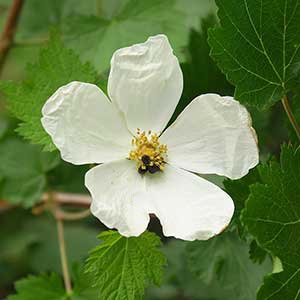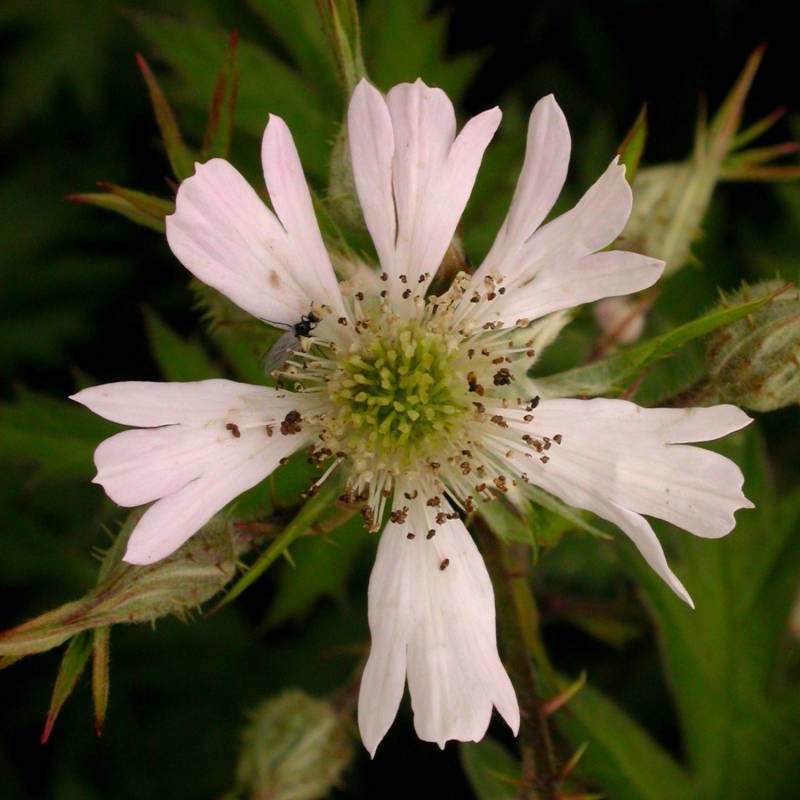Rubus bartonianus
Rubus laciniatus
cut-leaf blackberry, evergreen blackberry
Leaves primarily 5-foliate, from deeply lobed to divided into secondary leaflets, these deeply incised to serrate, green and nearly glabrous above, copiously hairy beneath.
Flowers rather numerous in simple or compound, flat-topped, leafy racemes;
calyx woolly and prickly, the 5 lobes lanceolate and tailed, reflexed, 8-15 mm. long;
petals 5, pinkish, 9-14 mm. long, obovate and tri-lobed;
stamens at least 75, pistils few.
Drupelets coherent, blackberry ovoid, 1-1.5 cm. thick, blackish
Rubus bartonianus
Rubus laciniatus
Occurring chiefly west of the Cascades crest in Washington; British Columbia to California, east to Idaho, Montana, Wyoming, and Colorado.
- Local floras:
BC,
CA,
OR,
WA
- Local Web sites:
CalFlora,
CalPhotos,
Flora NW,
PNW Herbaria,
Turner Photog.
WildflowerSearch
iNaturalist (observations)
USDA Plants Database
- LBJ Wildflower Center
- SEINet
- Plants of the World Online
- Encyclopedia of Life
- Wikipedia
- Google Image Search



